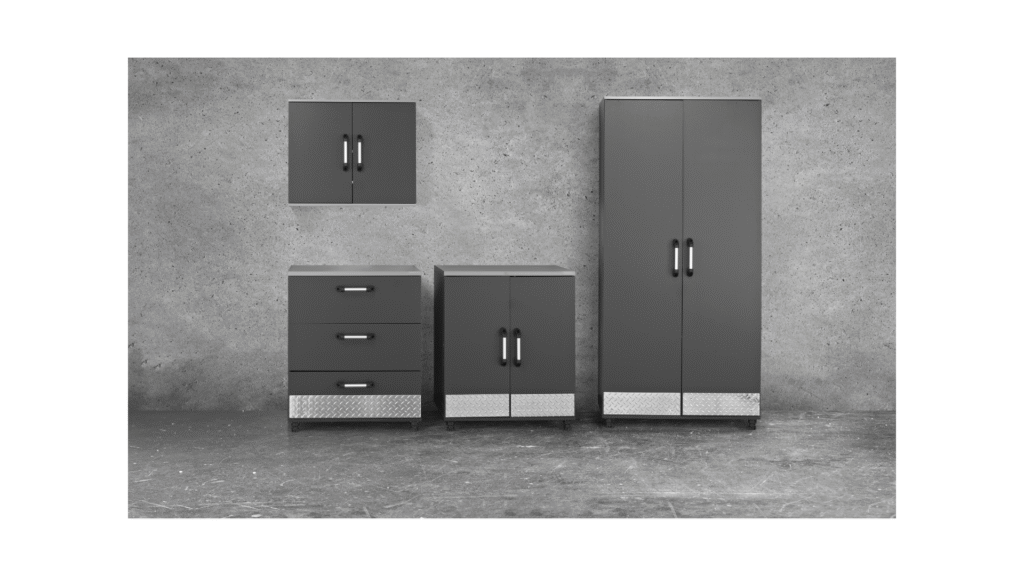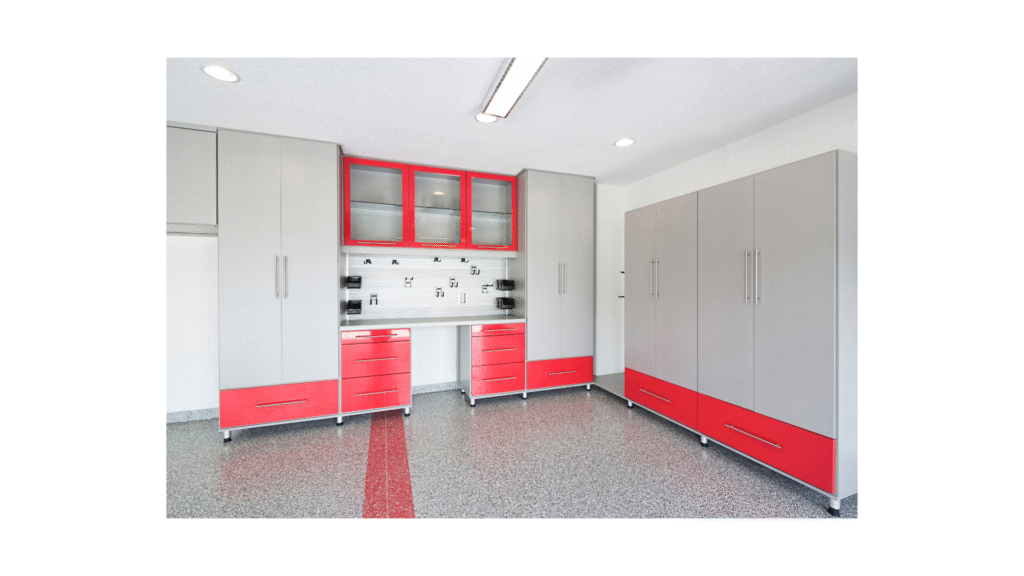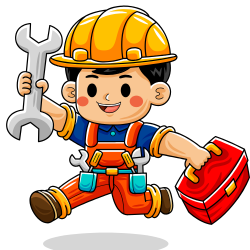Picking cabinets is a pretty big deal in any kitchen or workshop project. The choice between steel and wood cabinets affects how your space feels, holds up over time, and even how much maintenance you’ll be signing up for. I’ve spent a lot of time in homes and garages, and I’ve seen the ups and downs of both materials. Here’s a look into what you should know if you’re caught between steel and wood cabinets.
Garage Organization!

Steel vs. Wood Cabinets: The Basics
Steel cabinets are often seen in industrial spaces or modern kitchens; they give off that crisp, clean vibe. Wood cabinets, on the other hand, are classic. They add warmth, texture, and personality to a room. Deciding between them is less about right or wrong, and more about which qualities you value for your setup.
Steel cabinets are made from different metals like stainless or powdercoated steel, giving them a tougher outer shell. Wood cabinets can be built from hardwood, softwood, or engineered woods (like plywood or MDF), so there’s a lot of range in look and price points. Not only does each material stand out visually, but the construction also affects how long your cabinets will last and how well they handle daily use.
Durability and Strength: What Lasts Longer?
Durability is a big reason why some folks go straight for steel. A good steel cabinet doesn’t warp, crack, or soak up moisture the way wood might over the years. In garages or commercial kitchens where spills and bumps are common, steel holds up without showing much wear, and dents are usually just cosmetic.
Wood cabinets can be super sturdy, especially if you go for solid hardwood. Still, wood is more likely to dent, scratch, or get damaged if water leaks go unnoticed. Engineered wood options can be less expensive, but those materials usually don’t last as long as solid wood or steel, especially in tough conditions like a humid kitchen or workshop. Over decades of use, you may see wood age gracefully or show battle scars, while steel often just needs a cleaning to look new.
Style and Aesthetic Choices

Wood brings in a sense of warmth and comfort. If you love rich grains, unique patterns, or want a cozy room, wood usually wins out. Wood cabinets are easy to personalize, and they can be painted, stained, or refinished to match changing tastes. They fit in with everything from farmhouse kitchens to traditional or contemporary styles, letting you tweak the vibe of your home as trends change.
Steel cabinets look modern, sometimes even a bit industrial. Highgloss finishes, straight lines, and minimal fuss make them popular in spaces where you want a clean, up-to-date look. They’re often easier to wipe down and can look fresh for years with just a little care. Color choices may be more limited, but if you’re after a streamlined aesthetic, steel delivers.
Maintenance and Cleaning
- Steel Cabinets: I’ve found that cleaning steel cabinets is pretty straightforward; just a quick wipe with a damp cloth usually does the trick. Stainless steel resists most stains, but fingerprints and smudges can show up, especially on shinier finishes. For powdercoated or painted steel, scratches or chips might happen, but they don’t affect performance much unless you’re really rough with them. Occasional polishing can keep them looking next-level cool.
- Wood Cabinets: Wood takes a little more TLC, especially in areas that see a lot of splashes or grease. Spills need quick cleanup to avoid stains or warping. Over time, wood cabinets might need restaining or refinishing if the surface gets dull or scratched. Some cleaning products can damage certain finishes, so gentle cleaners are the way to go. Regular dusting and careful maintenance keep them looking sharp for decades.
Cost: Upfront and Long-Term

Steel cabinets can be surprisingly affordable, especially if you’re looking for basic designs made in bulk (like those used in schools or offices). Custom steel cabinets cost more, though. Wood cabinets range widely by the type of wood and craftsmanship. Highend hardwood cabinets are pricey up front but can last for decades with good care. Builders’ grade or engineered wood cabinets cost less, but sometimes don’t age as well or handle heavy use in high-traffic rooms.
When looking at the total cost, I also consider the odds of needing repairs down the line. Steel’s low-maintenance vibe can make it a money-saver, especially in tough environments. Wood cabinets can be repaired or refinished instead of replaced, so they’re surprisingly adaptable if the upfront investment fits your budget. Plus, a well kept set of wood cabinets can boost home value, making them an investment as much as a style choice.
Where Each Shines: Best Uses for Steel and Wood Cabinets
- Steel Cabinets: Great for garages, workshops, utility areas, and ultra modern kitchens. Their resistance to moisture and easyto-clean surfaces make them winners in commercial kitchens or any messy space. They can also take bumps and bruises, making them ideal in heavy-use zones.
- Wood Cabinets: Ideal in home kitchens, offices, and anywhere you want that cozy, natural look. They add value to homes and are great when you want something custom or highend. Wood cabinets shine in spaces where a rich, inviting feel matters most to you and your guests.
Things to Consider Before Choosing

- Environment: Humid or wet environments can be tough on wood cabinets. If you deal with condensation or lots of spills, steel is less likely to give you headaches. For areas near sinks or garage spaces with wild weather shifts, steel might be your safer bet.
- Resale Value: Wood cabinets are often a selling point for home buyers who love traditional styles. Steel appeals to those looking for a sleek, modern space, so think about who might live in your home next if you’re planning to sell.
- Customization: Wood offers more options for shapes, sizes, and unique finishes. Steel cabinets can be custom made, but usually come in standard shapes and colors unless you go for a specialty maker. If unique layouts or colors matter, wood is often more flexible.
Noise and Feel
Steel cabinets can sometimes be a little noisy; you might hear a metallic clang when closing the doors. Some people don’t mind, but others prefer the soft-close feel of solid wood. Softclose hinges can fix this for either option, but it’s something to keep in mind if you’re sensitive to noise or want a quieter kitchen experience.
Repairs and Modifications
Wood holds up well if you ever want to move things around or add shelves later. It’s easy to drill into or patch up if you change your layout. Steel is a bit trickier, since modifications often mean special tools, and repairs for dents or dings aren’t always as simple as filling in wood with putty. Planning in advance can save some headaches down the road.
Advanced Tips for Getting the Most from Your Cabinets
I’ve seen a few tricks go a long way with both steel and wood cabinets:
- Add liners or mats inside your cabinets. This helps protect the interior and makes cleanup easier, no matter which material you pick. It can also cut down on noise and help keep things tidy.
- Use softclose hardware for both wood and steel doors and drawers, making the kitchen or shop quieter and reducing wear over time. These upgrades are inexpensive and make a noticeable difference in daily use.
- Seal wood cabinets with a good finish to help block out moisture and stains in high-use zones like under the sink or next to the stove. If you’ve put wood cabinets in a humid area, resealing every few years will help them last.
Common Questions About Steel and Wood Cabinets

Question: Will steel cabinets rust in a kitchen or garage?
Answer: Most steel cabinets made for indoor use are treated to prevent rusting. Stainless steel and powdercoated finishes are designed to fight off moisture and spills, but regular cleaning and keeping surfaces dry definitely help them last longer. In coastal or very damp areas, take extra care to avoid scratches that expose the metal underneath.
Question: Can wood cabinets be used in a garage?
Answer: Yes, but it’s good to pick hardwoods or sealed woods if your garage isn’t climate controlled. Avoid unsealed or cheap particleboard cabinets, which might start to warp or fall apart if things get humid or wet. If you want longlasting wood cabinets in a garage, invest in weatherproof finishes and check them each season.
Question: Which is easier to install?
Answer: Both can be installed by a handy DIYer or a pro, but wood cabinets tend to be heavier. Steel cabinets often come in lighter, standard sizes with mounting hardware, especially the types designed for garages or commercial spaces. For tricky layouts, custom wood cabinets can actually make fit and finish easier, so factor in your project needs.
Question: Are steel cabinets fireproof?
Answer: Steel cabinets offer better protection than wood in a fire, but they aren’t truly fireproof. Contents inside can still get damaged, and high heat can eventually distort metal. Still, in most cases, steel gives you extra peace of mind compared to wood if fire risk is a worry in your space.
Final Thoughts
The decision between steel and wood cabinets depends on where you’ll use them and the look you’re going for. Steel cabinets are pretty handy for modern, tough environments, and they make cleaning a breeze. Wood cabinets bring character, can be tailored to your style, and add coziness anywhere they go. Whether you value easy care, long-term value, or a certain look, weighing these pros and cons makes picking the right cabinet material way easier. Just keep your space, habits, and personal style in mind, and you’ll set yourself up for cabinets you’ll enjoy for years to come. If you’re still on the fence, check out showrooms or request samples to see and touch the options before deciding—sometimes, the right pick becomes obvious when you get the feel for it firsthand.

Happiness is finding the right tool, right when you need it!
